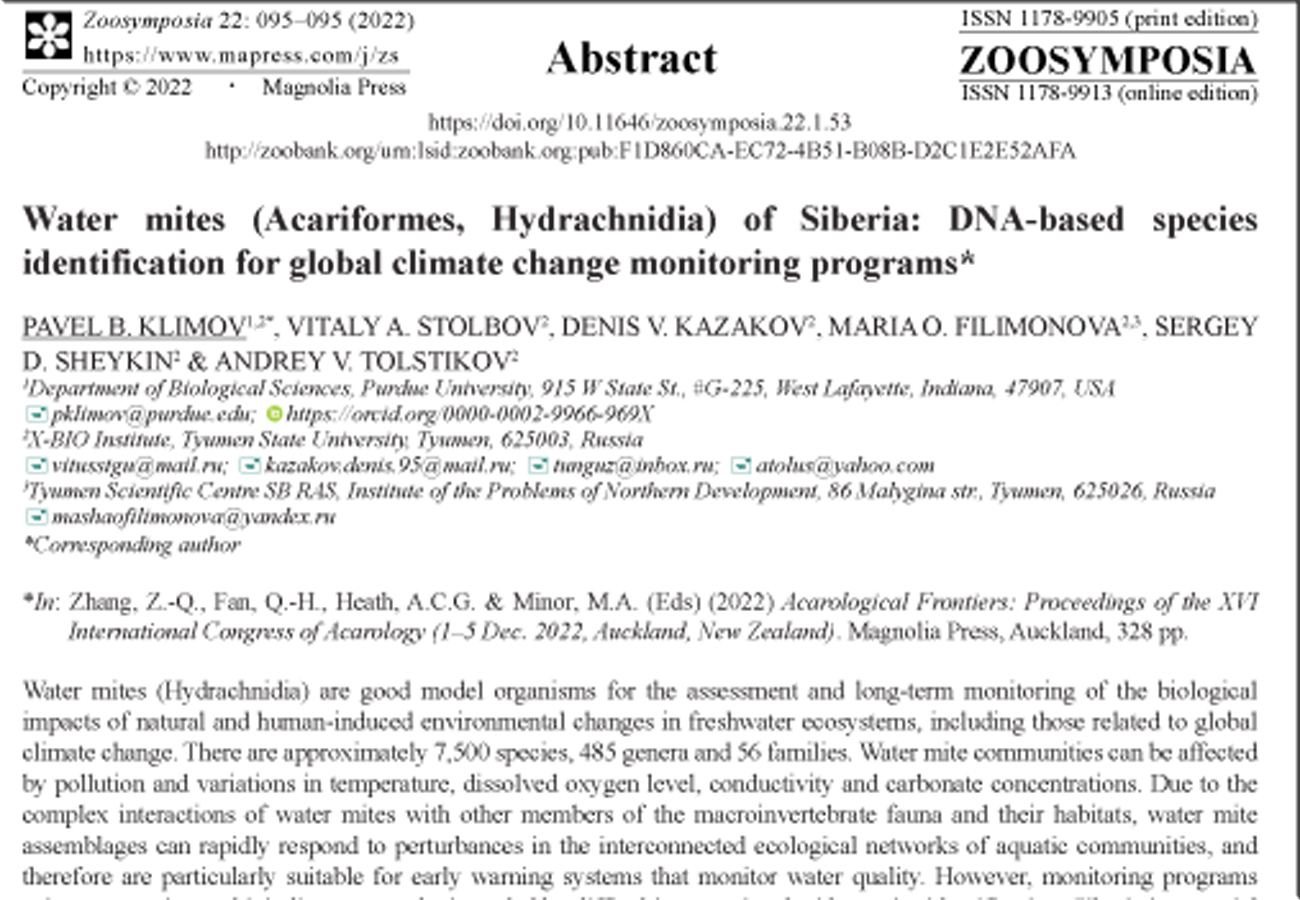Abstract
Water mites (Hydrachnidia) are good model organisms for the assessment and long-term monitoring of the biological impacts of natural and human-induced environmental changes in freshwater ecosystems, including those related to global climate change. There are approximately 7,500 species, 485 genera and 56 families. Water mite communities can be affected by pollution and variations in temperature, dissolved oxygen level, conductivity and carbonate concentrations. Due to the complex interactions of water mites with other members of the macroinvertebrate fauna and their habitats, water mite assemblages can rapidly respond to perturbances in the interconnected ecological networks of aquatic communities, and therefore are particularly suitable for early warning systems that monitor water quality. However, monitoring programs using water mites as bioindicators may be impeded by difficulties associated with species identification. Siberia is a crucial region for biodiversity conservation and climatic research by being a major carbon sink due to the large amounts of carbon preserved in permafrost and sequestered by vast boreal forests and peatbogs, and is also a key region for climate change research. There are several reference sites in the Arctic tundra, forest and grassland areas allocated for long-term monitoring of climatically active gases, as well as assessment of the impact of climate change on animal and plant communities.
References
-


